For performance testing my standard restriction test bench was used. It has been configured so the inlet port of the MMRS-SAP top is vertical, with the outlet port horizontal.
Essentially these tests measure the flow rate and pressure output of the pump. By comparing the results of the same pump fitted to different tops we can make an assessment of the top’s performance by comparing it’s results to others.
To test pumps we use a flow meter and a differential manometer and vary restriction by adjusting a brass gate valve. We adjust the gate valve to set different flow rates and measure the pressure “gain” across the pump using the differential manometer. To better understand how to read these plots check out this guide. Additional I take the amps reading from the power supplies digital display at each data point so we can add a pump/top efficiency chart.
As I used the Aqua Computer D5 USB pump for previous D5 top testing, it has been used again so any previous results can be used for comparisons.
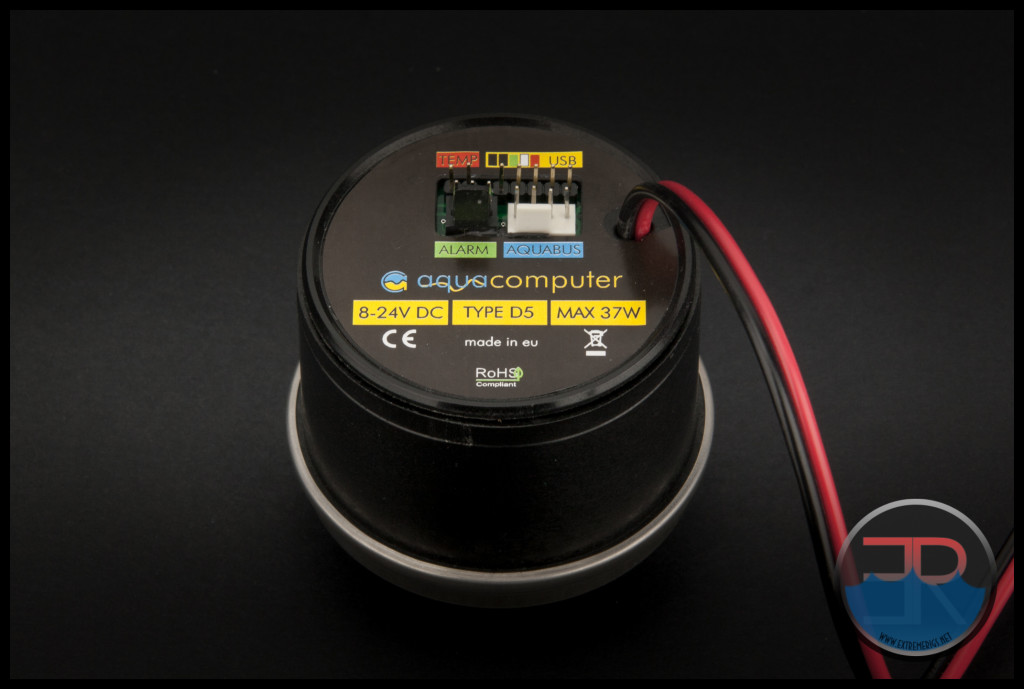 This version of the D5 pump is an electronically controlled D5 Vario which is able to have the power adjusted via Aqua Computer’s Aquasuite software. The USB connection was hooked up to a laptop for varying the power to the pump which is delivered 12.1 volts from the PSU. Minimum power level is 25% and maximum is 100%. I decided on 5 power levels to test at: 25%, 40%, 60%, 80% and 100%
This version of the D5 pump is an electronically controlled D5 Vario which is able to have the power adjusted via Aqua Computer’s Aquasuite software. The USB connection was hooked up to a laptop for varying the power to the pump which is delivered 12.1 volts from the PSU. Minimum power level is 25% and maximum is 100%. I decided on 5 power levels to test at: 25%, 40%, 60%, 80% and 100%
The raw data is of less interest to most readers who prefer to view plots created from the data, so we’ve hidden the raw data with a spoiler tag.
This first plot shows us the output from the pump / pump top in PSI @ GPM with some slight extrapolation added to continue the plot curves
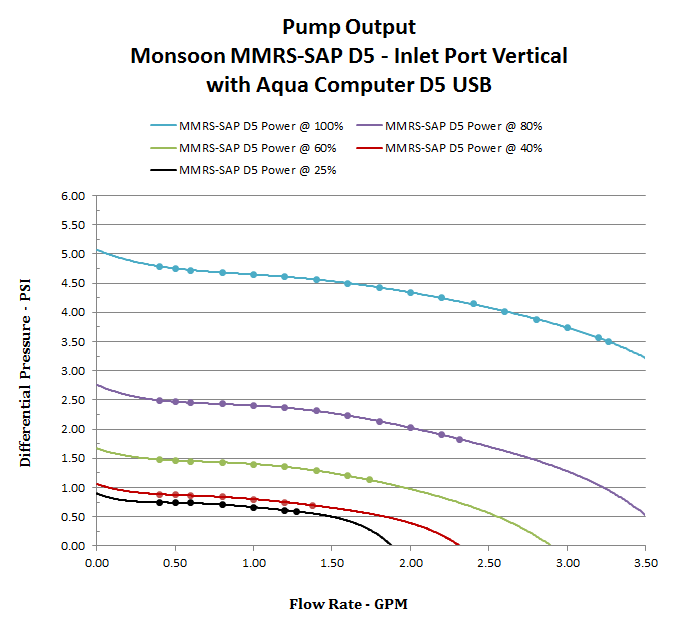 Two things stand out here for me:
Two things stand out here for me:
First is the large gap between the 100% and 80% curves, although this gap does seem to scale with each reduction in power. Without comparisons to view just yet, this could mean we have a pump top which works extraordinarily well at full power and is average at reduced power levels OR we have a top which is average at full power and performs poorly at reduced power levels.
Second is how close together the 25% and 40% lines are. This indicates that below 40% power the MMRS-SAP doesn’t really drop off much with the output of the pump. In my mind neither of these settings are practical in real world use, but there are users who go for silence over performance, so we include the data to cover all bases.
Now if we add on the power consumption for each data point we can get a feel for the pump/top efficiency:
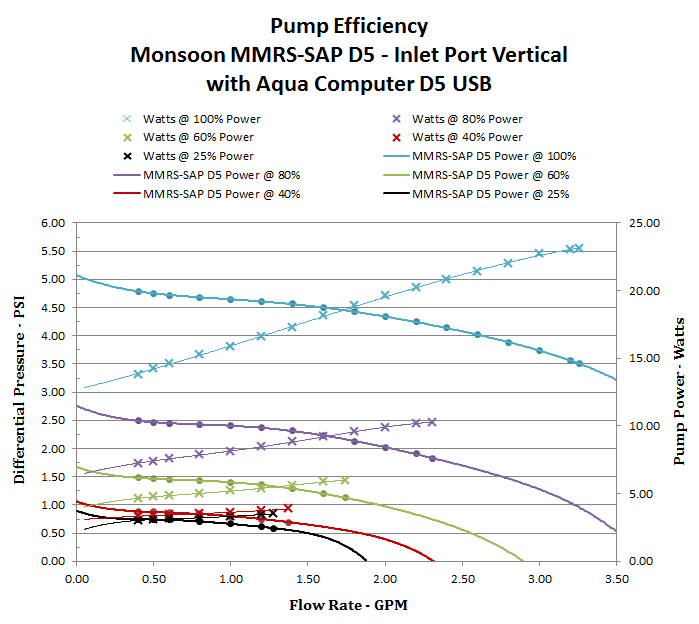 Here we see the sweet spot for the 3 higher power settings is with a flow rates of between 0.5 and about 2.0 gpm. This is good because this is traditionally where we want to operate.
Here we see the sweet spot for the 3 higher power settings is with a flow rates of between 0.5 and about 2.0 gpm. This is good because this is traditionally where we want to operate.
With flow rates under 1.0 GPM, the 100% and 80% power Vs. output looks very efficient.
The 25% & 40% lines are just a blur, so we might as well run at 40% if looking for silence via a low pump speed.
In the next plot existing data from previous D5 top testing @ 100% has been added for comparison with the MMRS-SAP’s results:
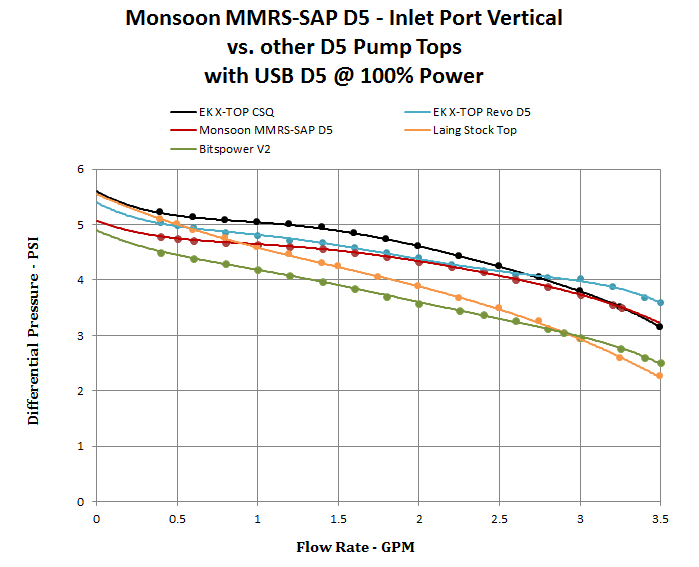 It seems as though we have an average performing top on our hands, but let’s zoom in on the flow rate range most users will have their systems running at before making any assessments.
It seems as though we have an average performing top on our hands, but let’s zoom in on the flow rate range most users will have their systems running at before making any assessments.
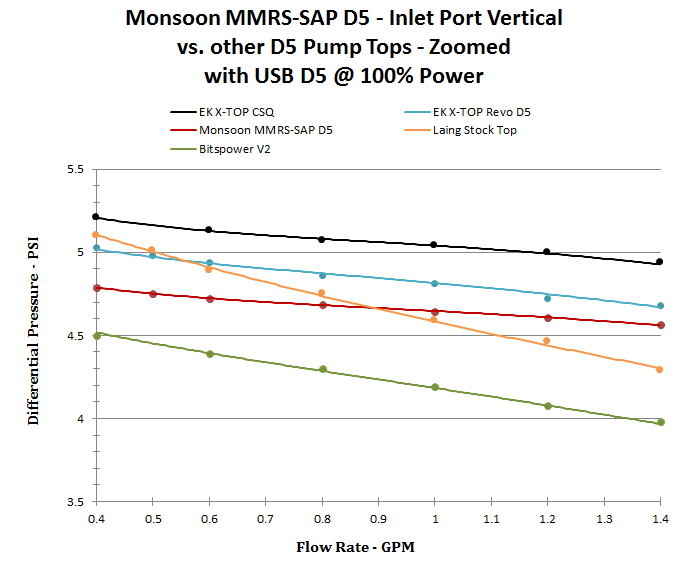 The MMRS-SAP is clearly able to outperform the Bitspower V2 D5 top, however it is weaker than both the current and previous D5 tops released from EK. With a flow rate of less than 0.9 GPM the stock D5 top from Laing has better output than the MMRS-SAP. The MMRS-SAP performance does improve however with less restriction in the loop (higher flow rate).
The MMRS-SAP is clearly able to outperform the Bitspower V2 D5 top, however it is weaker than both the current and previous D5 tops released from EK. With a flow rate of less than 0.9 GPM the stock D5 top from Laing has better output than the MMRS-SAP. The MMRS-SAP performance does improve however with less restriction in the loop (higher flow rate).
The above comparison charts were at 100% power. Now let’s look at the full range we tested the MMRS-SAP against the EK D5 Revo top.
We saw the large gap in the output of the MMRS-SAP between 100% and 80% and in the 100% power comparisons above the MMRS-SAP performed respectively.
With reduced power levels however the MMRS-SAP output drops off considerably when compared to EK’s Revo top. This drop off was unexpected, so a re-test was conducted with the results being the same.
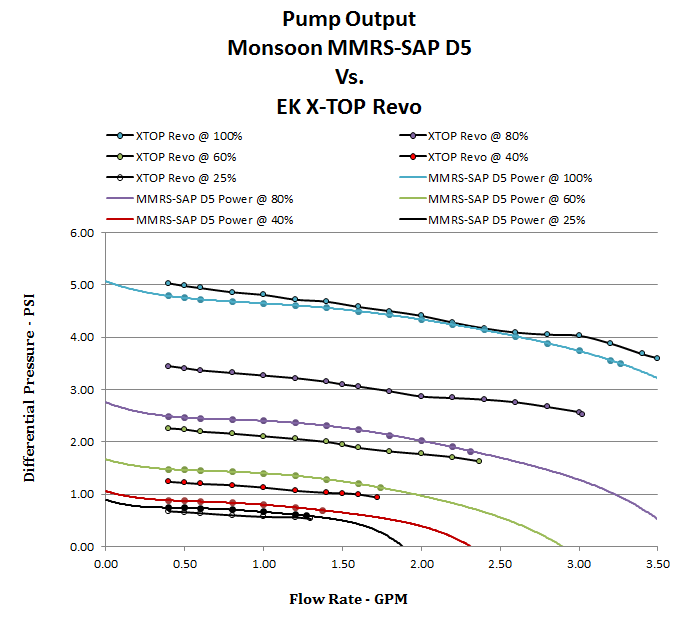 The next plot uses the same data (minus the 100% power which can be seen two plots above) as the one above and is just zoomed in. This more clearly shows the separation between the output of the two tops at reduced pump power.
The next plot uses the same data (minus the 100% power which can be seen two plots above) as the one above and is just zoomed in. This more clearly shows the separation between the output of the two tops at reduced pump power.
Next we compare the performance of the MMRS-SAP to EK’s previous D5 top releases. The older version of EK’s pump top is better than the newer REVO, so the 100% performance now looks a bit worse. In addition the poor performance of the MMRS-SAP with power levels at 80% and below is clearly shown again.
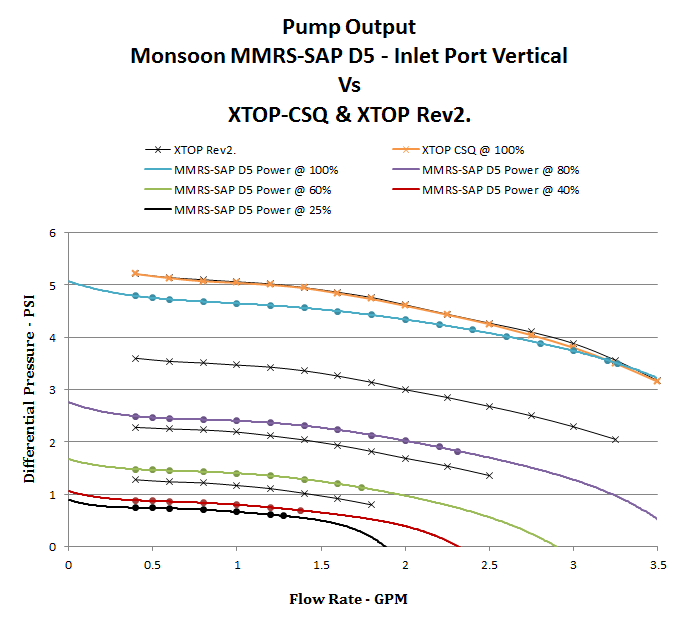 Unfortunately the MMRS-SAP pump top does not match the performance of it’s current direct competition and has similar output to a stock D5 top at 100% power.
Unfortunately the MMRS-SAP pump top does not match the performance of it’s current direct competition and has similar output to a stock D5 top at 100% power.
At reduced power levels the MMRS-SAP output has a significant performance drop off and is well below the competition’s test results.
The MMRS-SAP does outperform the Bitspower V2 D5 top (at 100% power) which is one of the most popular D5 tops on the market, primarily due to it’s aftermarket accessories which “bling up” a Bitspower top/pump combo. Unfortunately I don’t have reduced power results for the Bitspower top to compare against.
Next up – Summary.








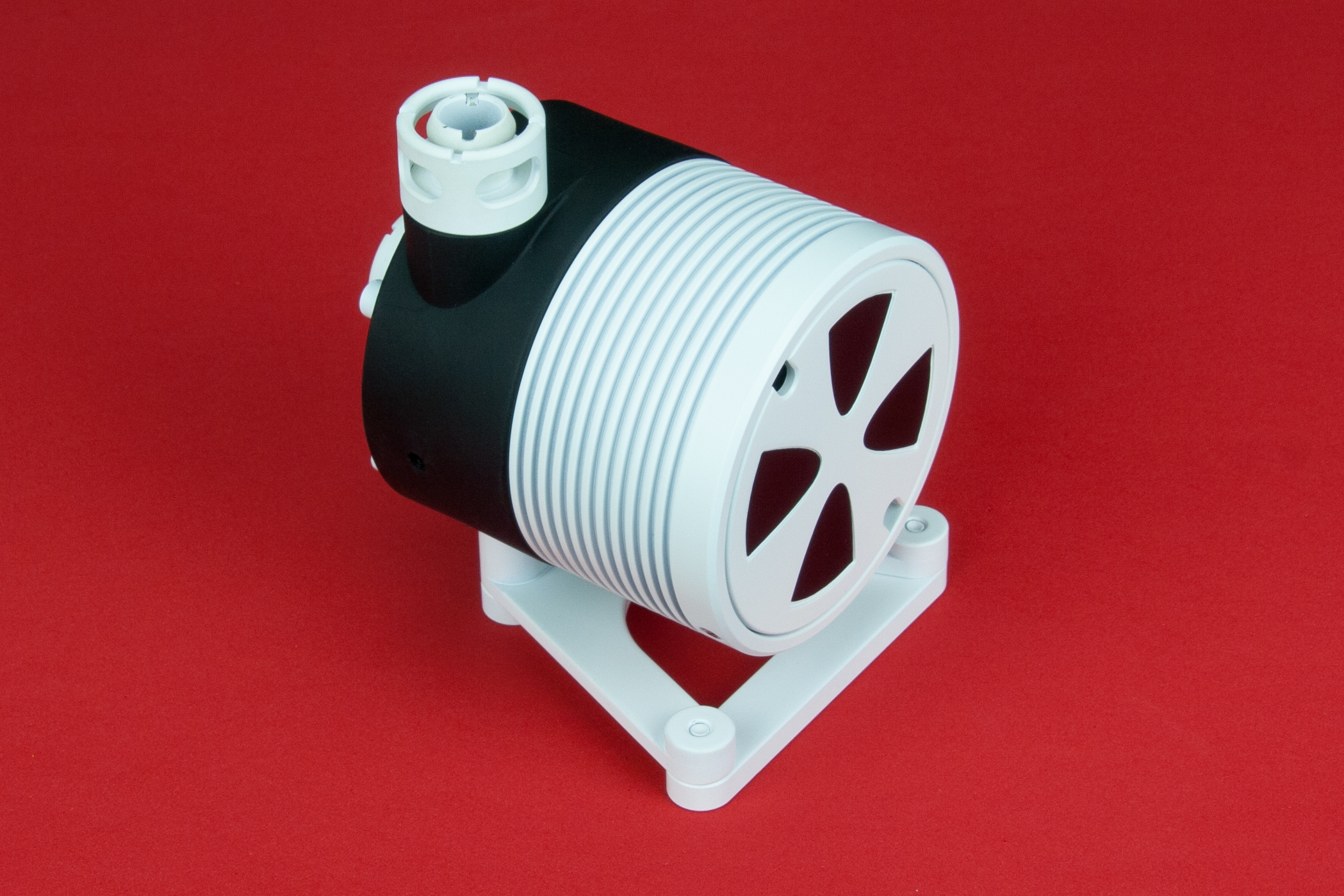
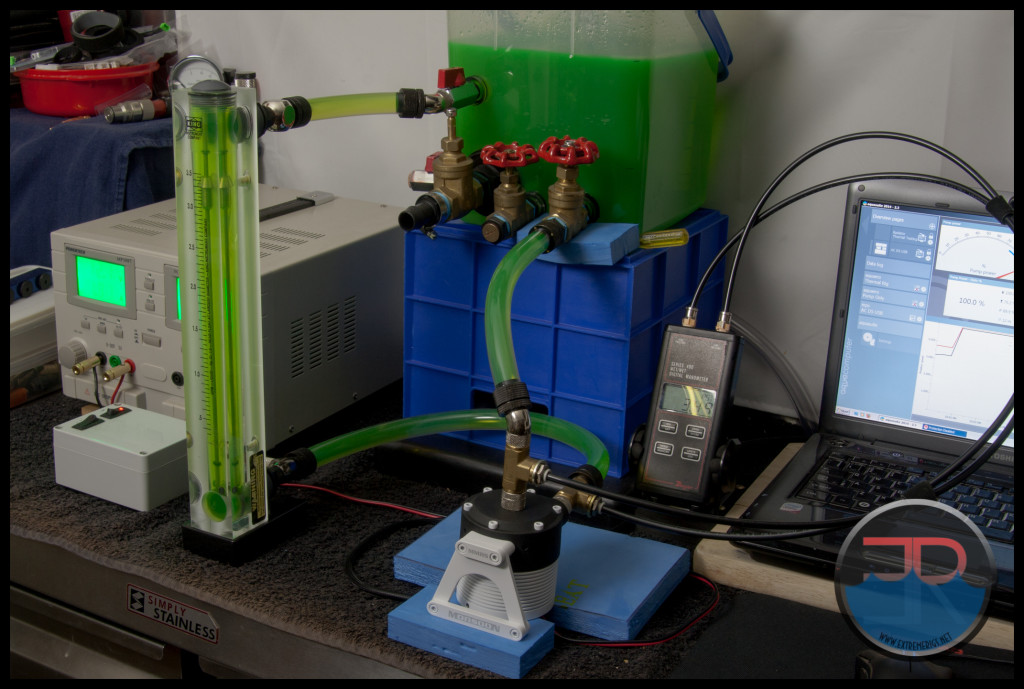
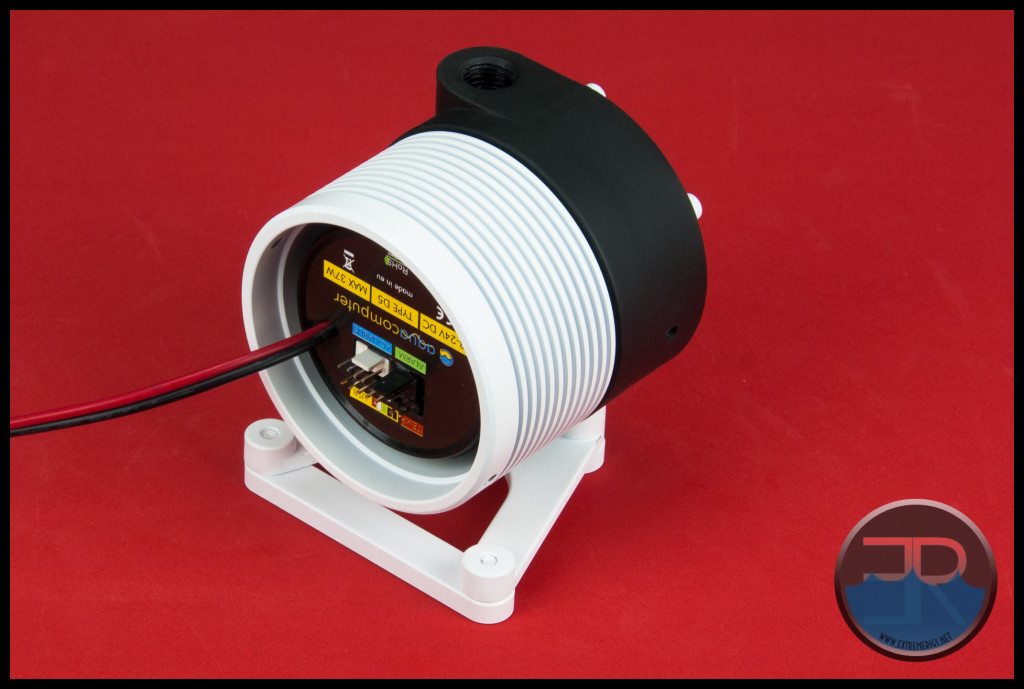
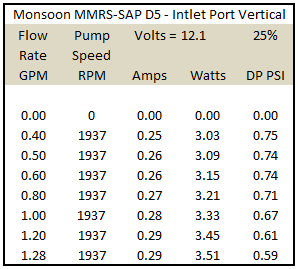
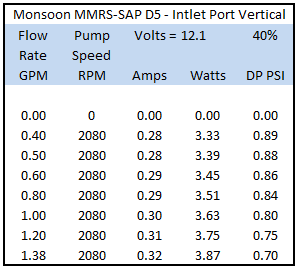
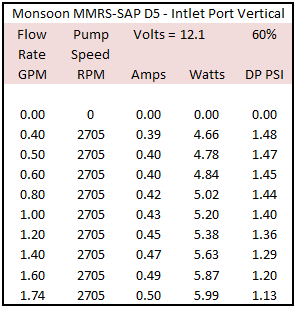
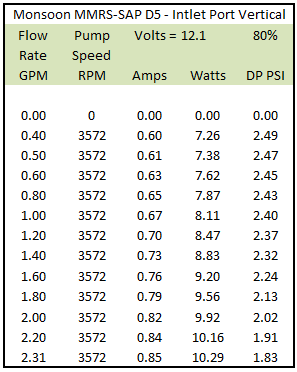
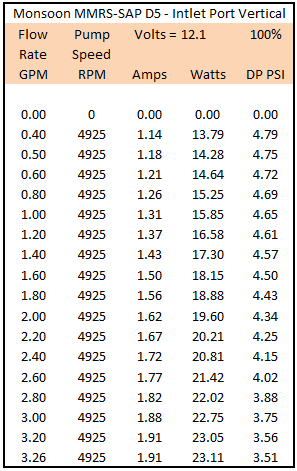
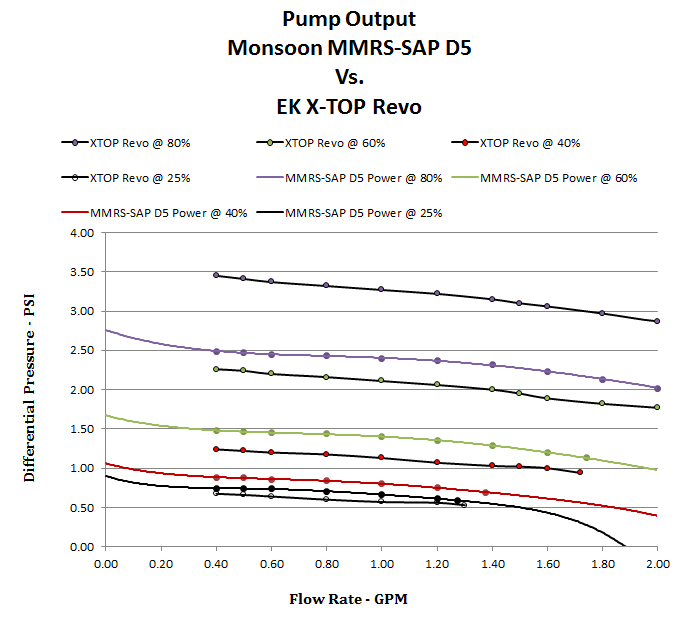



Comments are closed.